Sharks are one of the most fascinating creatures in the ocean. These ancient creatures have roamed Earth's oceans for over 400 million years. Found in every ocean, they range from tiny reef dwellers to massive deep-sea hunters. There are more than 500 known species of sharks today. Some are small and harmless, while others are huge and powerful. Some, like the great white, are feared for their power, while others, like the whale shark, are gentle giants. Do you know which is the largest shark ever recorded? The largest shark ever recorded is the extinct Megalodon, a prehistoric giant of the Otodontidae family that lived millions of years ago. But if someone asks you about the largest shark in the world, which still exists, do you know the name? In this article, we'll take a look at the biggest sharks ever found. We'll explore their size, where they were spotted, and what makes them so special.
List of Largest Sharks in the World
| Shark Name | Maximum Length (meters) | Maximum Length (feet) | Notable Features |
| Whale Shark | 18.8 | 62 | Largest fish, filter feeder |
| Basking Shark | 12.3 | 40 | 2nd largest, filter feeder |
| Tiger Shark | 7.4 | 24 | Big predator, patterned stripes |
| Great White Shark | 7.0 | 23 | Famous predator |
| Greenland Shark | 6.4 | 21 | Cold water, long-lived |
| Great Hammerhead Shark | 6.1 | 20 | Large, hammer-shaped head |
| Megamouth Shark | 5.5 | 18 | Deep-water, big mouth |
| Pacific Sleeper Shark | 7.0 | 23 | Deep-sea, slow swimmer |
| Thresher Shark | 6.1 | 20 | Long tail fin |
| Bluntnose Sixgill Shark | 5.5 | 18 | Deep-sea, ancient lineage |
| Leopard Shark | 2.1 | 7 | Distinctive spots |
| Bluntnose Shark | 4.0 | 13 | Large, deep-sea species |
| Sand Tiger Shark | 3.2 | 10.5 | Fierce look, not dangerous |
| Bull Shark | 3.4 | 11 | Strong, swims in fresh water too |
| Common Thresher Shark | 5.7 | 19 | Extremely long upper tail (fin) |
1. Whale Shark
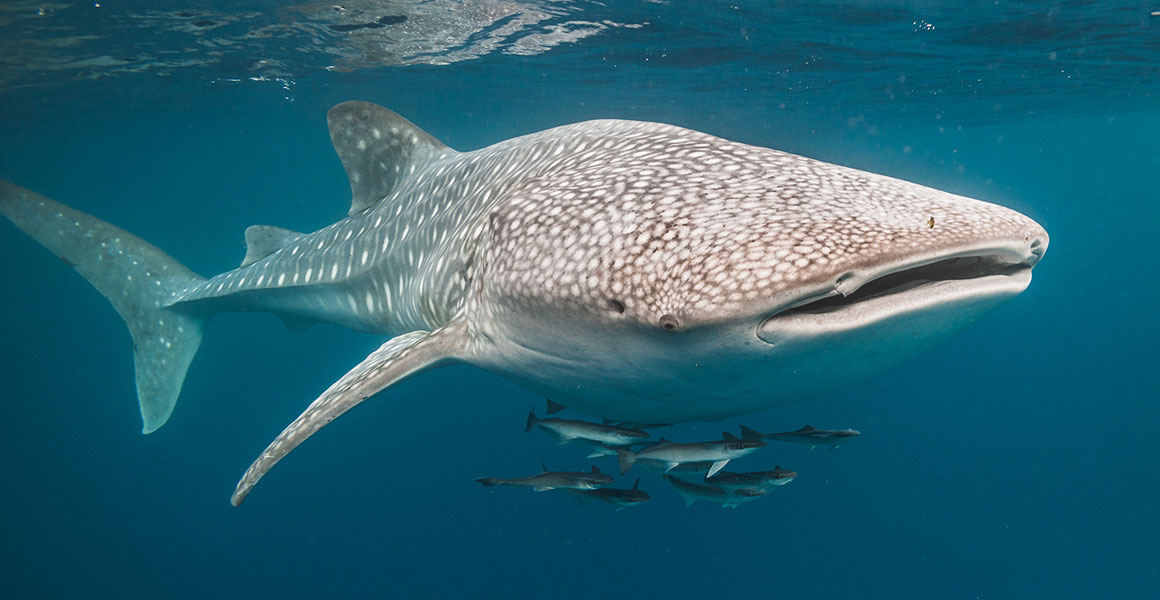
The whale shark is the largest shark and fish in the world. It can grow up to 18.8 metres (62 feet). It has a broad, flat head and a huge mouth. Whale sharks are filter feeders. They eat tiny plankton and small fish by swimming with their mouths open. Whale sharks move slowly and are gentle giants. These sharks live in warm, tropical oceans. Many people swim and dive with them because they are peaceful and safe.
2. Basking Shark

The basking shark is the second biggest shark in the world. It can reach up to 12.3 metres (40 feet) in length. Like the whale shark, it feeds by filtering tiny food from the water. Its mouth is enormous and can open very wide. Basking sharks swim near the surface with their mouths open to eat plankton. They move slowly and are harmless to humans. These gentle sharks are often seen in calm waters but can be found worldwide.
3. Tiger Shark

The tiger shark is one of the largest predatory sharks. It grows up to 7.4 metres (24 feet) long. Tiger sharks are named for their dark stripes that fade as they grow older. They eat many things, including fish, turtles, birds, and even trash. Tiger sharks can live in both shallow and deeper waters. They are strong swimmers and can be found in tropical and subtropical oceans worldwide.
4. Great White Shark
:max_bytes(150000):strip_icc()/White-shark-Dave-Fleetham-getty-56a5f8593df78cf7728ac02b.jpg)
The great white shark is famous and feared. It can reach up to 7 metres (23 feet) long. The great white has a powerful body and sharp teeth. This shark is a top predator and often hunts seals and other sea mammals. Great whites can be found in many oceans, especially near coastal regions. They are fast swimmers and use their speed to surprise prey. Though known for attacks, they rarely harm people.
5. Greenland Shark

The Greenland shark lives in icy northern waters. It can grow up to 6.4 metres (21 feet) long. This shark swims slowly and spends most of its life deep underwater. Greenland sharks have a long life span and can live for hundreds of years. Their skin looks rough and grey. They mainly eat fish but can also eat seals. Humans rarely encounter these sharks because they live in deep-sea habitats.
6. Great Hammerhead Shark
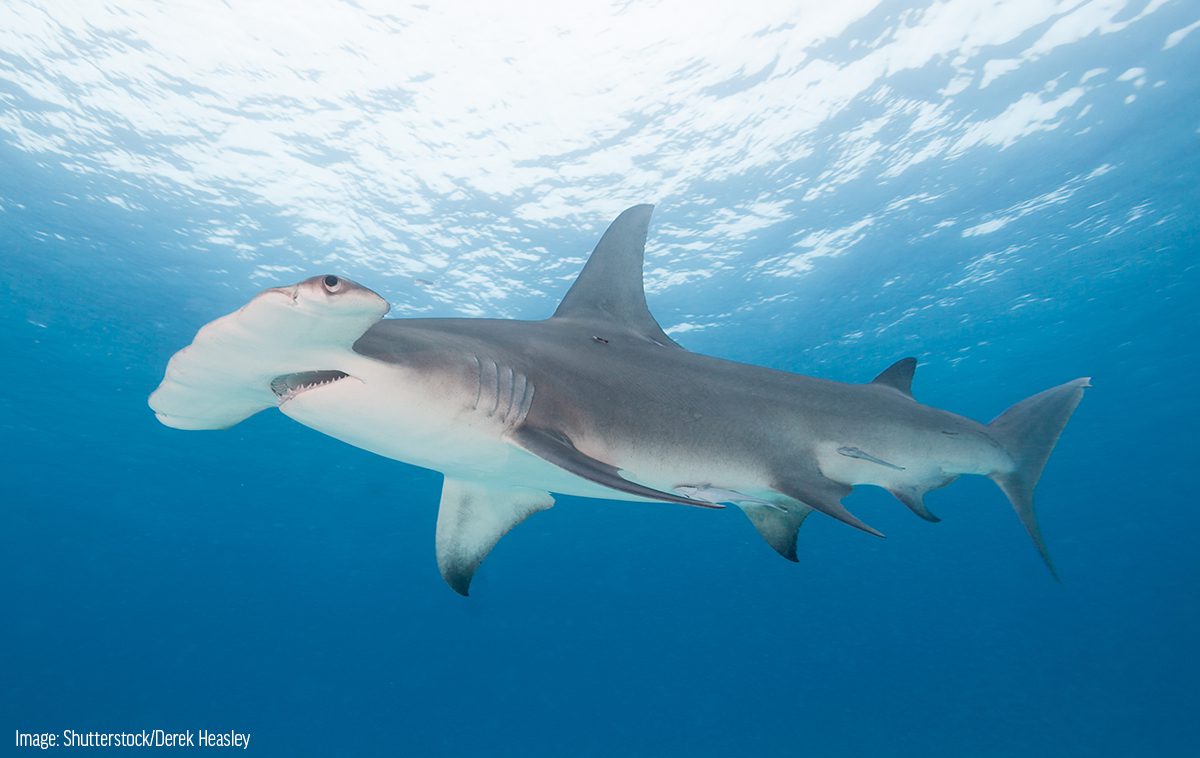
The great hammerhead shark is the largest of the hammerhead species. It can reach up to 6.1 metres (20 feet) in length. This shark is easy to recognise by its broad, hammer-shaped head. The head helps it find and catch prey. Great hammerheads hunt fish, stingrays, and other sharks. They live in warm and tropical waters. Though they look scary, they rarely hurt people.
7. Megamouth Shark
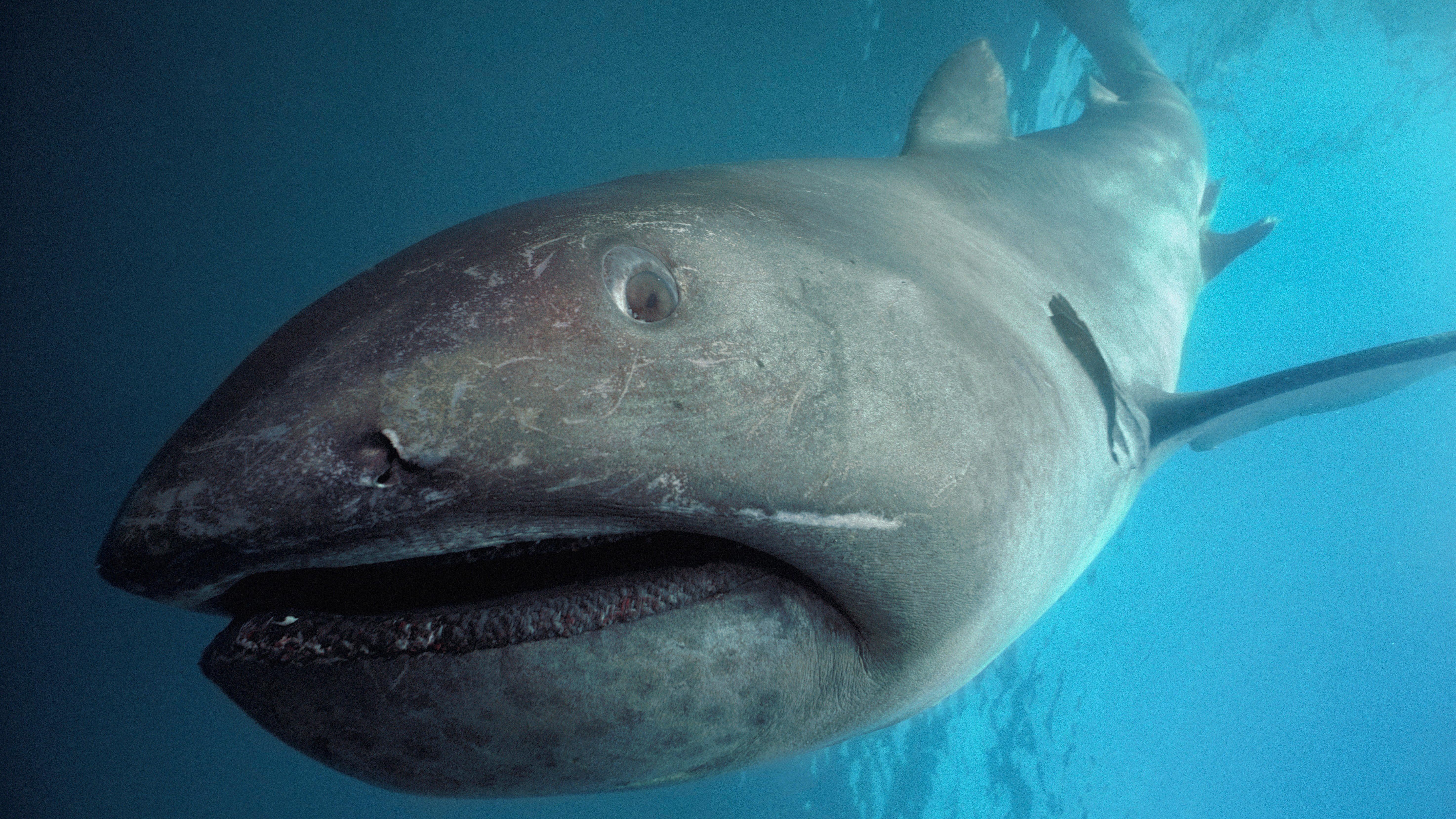
The megamouth shark is a rare deep-water shark. It grows up to 5.5 metres (18 feet) long. Its head and mouth are huge, which is how it gets its name. Megamouth sharks swim with their giant mouths open to catch plankton and small sea creatures. They are not aggressive and are rarely seen near the surface. Scientists know little about them because they are shy and live deep in the ocean.
Which Is The Largest Shark In The World?
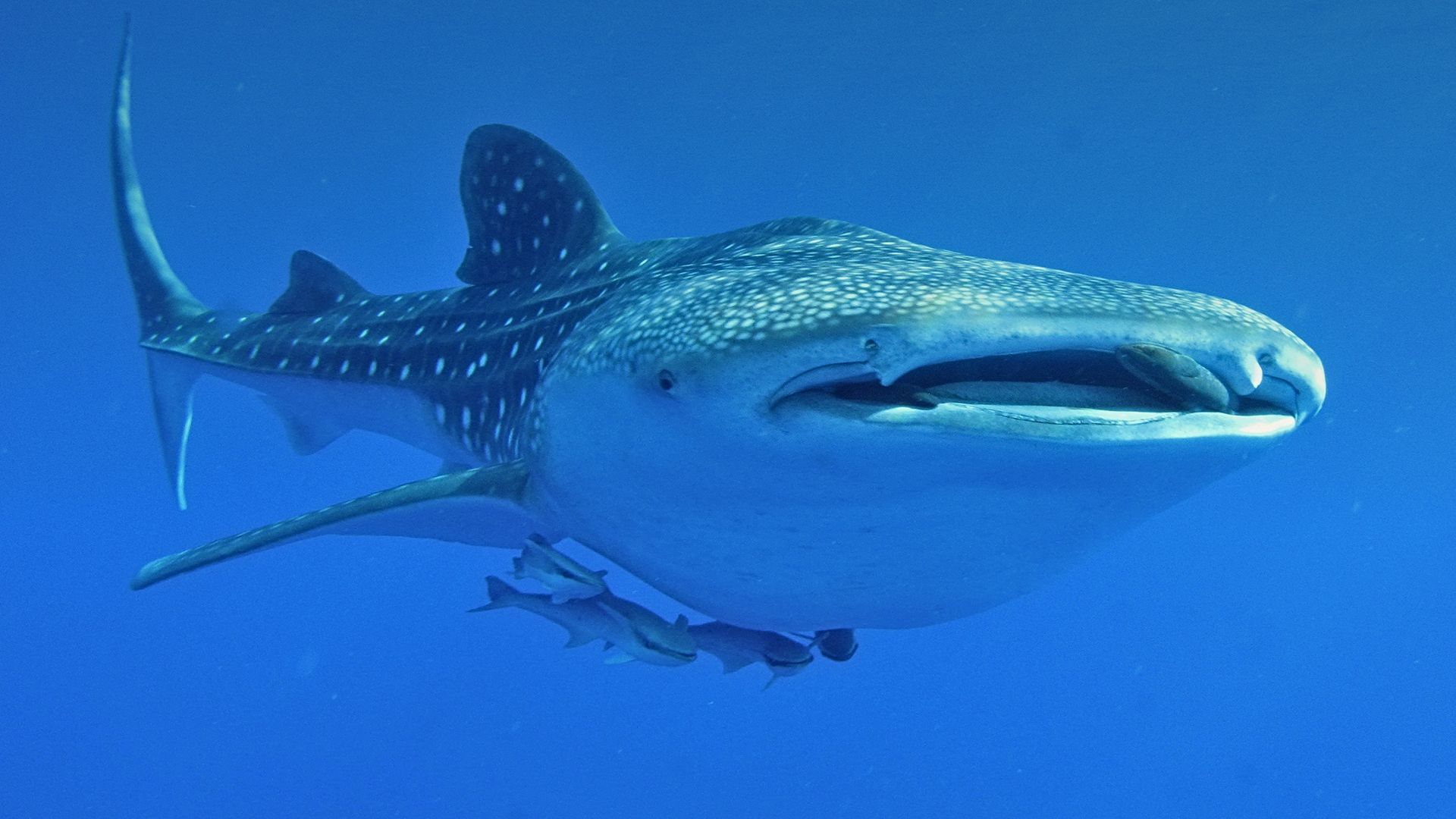
The largest shark and the largest fish in the world is the Whale Shark (Rhincodon typus). Despite its enormous size — up to 18 metres (60 feet) long — it is a harmless filter feeder. It primarily eats plankton, small fish, and fish eggs by swimming with its mouth open.
What Are The Big 3 Sharks?
The "Big 3" sharks, in the context of shark attacks, are the Great White Shark, the Tiger Shark, and the Bull Shark. They are considered the most dangerous to humans because of their large size, capability of inflicting serious injuries, and their habitats often overlap with human activity in coastal waters.
What Is The #1 Deadliest Shark?
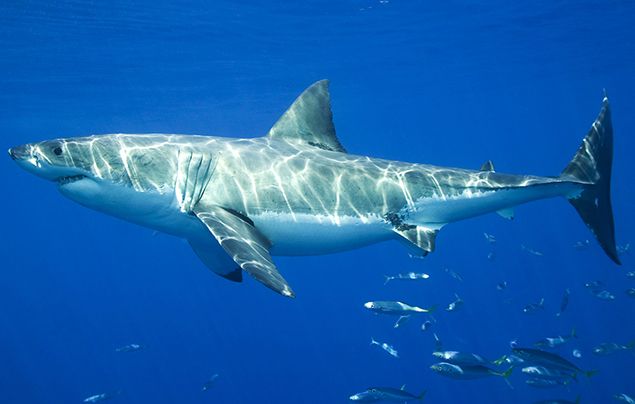
The shark responsible for the highest number of fatal, unprovoked attacks on humans is the Great White Shark (Carcharodon carcharias). While any large shark is dangerous, great whites, along with tiger and bull sharks, are the three species most frequently implicated in serious incidents globally, with the great white leading the recorded fatalities.
What Is Bigger, a Tiger Shark Or a Great White?

The Great White Shark is generally considered bigger than the Tiger Shark. While a large Tiger Shark can reach about 5.5 metres (18 feet) in length, Great White Sharks are, on average, longer (up to 6.1 metres or 20 feet) and, crucially, have a much heavier and more robust build, making them significantly heavier than a Tiger Shark of a similar length.
Comments
All Comments (0)
Join the conversation